Embroidery
Embroidery is the crafting of fabric or other
materials arranged using needles to apply yarn or thread. It may include other
elements such as pearls, beads, quills, and sequins. In present times embroidery is basically seen on caps,
hats, coats, blankets, dress shirts, denim, dresses, stockings, and golf
shirts. It is available in different threads or yarns.
History of embroidery
The process was used to strengthen the progress of sewing techniques, stitching,
patching, sewing, and the decorative possibilities of sewing that led to the embroidery industry. Indeed,
significant durability of basic embroidery stitches has been observed. It is
true that embroidery develops within the embroidery. From primitive to later,
there is no change in any of the materials or techniques that can be perceived
or interpreted as moving to a more refined stage. On the other hand, we often
have initial work and technological advances after a very short time.
The embroidery industry has been found
worldwide and several early examples have been also found. Work has been done
according to the Warring States period in China. After dressing around 300-700
AD of the migration period, the edges of the trimming bands were further
strengthened with running stitching, backstitching, stem stitching, tailor
buttonhole stitching, and whip-stitching, but whether this work was only
reinforced was interpreted as indefinite or decorative embroidery. Should.
Ancient Greek mythology credits the goddess Athena with the art of embroidery
as well as the weaving that created a famous rivalry between her and mortal Arachne.
Classification of Embroidery
Embroidery
is classified according to the degree to which the designs take into account
the nature of the basic material and the relationship of the sewing placement
to the fabric. The main categories of embroidery are free or surface
embroidery, and needlepoint or canvas work.
In
surface embroidery, the design is applied regardless of the texture of the
underlying fabric. Examples include krill and traditional Chinese and
Japanese embroidery.
Counter-thread
embroidery patterns are created by sewing a predetermined number of
threads into the foundation fabric. It is more easily worked on embroidered
canvases, Ida fabrics, or even woven foundation fabrics such as woven cotton
and linen fabrics. Examples include cross-stitch and some types of blockwork
embroidery.
The same thread counted in the technique, on a canvas work or needlepoint, the threads
are sewn together through a fabric mesh to create a dense pattern that
completely covers the fabric of the foundation. The work of Bargello and Berlin
wool is an example of canvas work.
Materials for Embroidery
The needle is the principal sewing tool of embroidery and it comes in different sizes
and types for sewing. Fabrics and yarns used in traditional embroidery go
together wool, linen, and silk have been used for both fabric and yarn for
thousands of years. Today, embroidery thread is made from cotton, rayon, and
innovative yarn, as well as traditional wool, linen, and silk. Ribbon
embroidery usually uses narrow ribbons in silk or silk/organza blended ribbons
to create floral motifs.
Surface
embroidery techniques like chain sewing and couching or trimming are the most
costly of the expensive yarns and couching is mainly used for goldwork. Canvas
work techniques, so that more yarn is buried behind the work, use more
materials but provide a studier and more finished textiles.
In
both the canvas work and the surface embroidery, an embroidered hoop or frame
material ensures stretching and even sewing tension that prevents pattern
distortion. In contrast to modern canvas works that follow symmetrically
calculated stitching patterns with designs derived from repetitions of one or
only a few similar stitches in different colors and many types of surface
embroidery work use wide stitching patterns in single pieces.
Machines for Embroidery
Modern
or present embroidery is sewn with computerized embroidery machines using
patterns digitized by embroidery software. In machine embroidery, various
fillings add different textures and designs to the finished work. Machine
embroidery is used to add logos and monograms for business shirts or jackets,
gifts, and party wear, as well as to decorate home linen, draperies, and
embroidered fabrics that follow the wide hand embroidery of the past. Machine
embroidery is usually done with rayon thread, although polyester thread can
also be used. On the other hand, the cotton thread is risky to break and should
be avoided if it is below 30 counts.
There
has also been a development in freehand machine embroidery, new machines have
been designed that allow the user to create free-motion embroidery that has a
place in the textile arts, quilting, dressmaking, home furniture, and much
more. Users can use embroidery software to digitize digital embroidery designs.
These digitized designs are then transferred to the embroidery machine with the help of a flash drive and then the embroidery machine embroiders the selected
design on top of the fabric.
Types of Embroidery
There
are different types of Embroidery, such as below-
Counted Thread Embroidery
Counter-thread
embroidery is a type of embroidery in which the embroidery is counted by the
embroiderer before the needle enters the fabric. Even weave fabric is commonly
used. This creates a symmetrical figure as both the warp and weft fabric
threads are spaced evenly. This embroidery method involves counting the threads
in the fabric for each stitch so that symmetrical stitches are formed. The most
popular Counter-thread embroideries are cross stitch and blackwork.
Outline Embroidery
If
you have any kind of embroidery then you must know the outline stitch. You
first learn that as a sewing beginner. It is best to use it when sewing the outline
of tight lines. It works great for intricate linear designs. It is an early
embroidery stitch that is commonly used in the embroidery design. This simple
stitch makes the curved rope-like line perfect for curves, circles, or any
shape you want to highlight with an outline. In the examples, the top line of
the stitch is the outline stitch. While you work this stitch from left to
right, always place the functional thread above the stitch line.
This
becomes really important in the next step but makes it easier to track the
position of the thread if you put it on top of the stitch from the start.
Especially if any of these stitches are new to you. If you are working the
outline stitch from right to left, you are left-handed or it is easier for you
because the position of the thread is reversed and the working thread should be
below the line of stitching.
Whitework Embroidery
White
work embroidery is a kind of embroidery process where the sewing is the same
color as the foundation fabric. The term white work includes a variety of
embroidery and refers to freestyle, calculated thread, and canvas work techniques. It can also be opened and closed in two sections, depending on
whether the threads have been cut. Open White Work includes painted threadwork
and related cutwork, so that the threads are removed from the background
fabric, creating an open and fine effect. Examples of drawing thread work are
Broderie Angles, Madeira, and Hardanger. The nearest embroidery is also known as
pulling, which distorts the threads, grouping some together and pulling others
apart, creating an open effect. Whitework technique used in inherited
stitching for blouses, Christian gowns, baby bonnets, and other short articles.
Candle wicking Embroidery
Candle
witching embroidery is a type of whitework embroidery that is used as an
unbleached cotton thread on a piece of unbleached muslin. It gets its name from
the nature of the soft-cut cotton yarn that was later braked to form a cane for
the candles. The motifs are produced by using a variety of traditional
embroidery stitches as well as a tufted stitch. The subject is usually taken
from nature - flowers, insects, pine trees, and others. Pennsylvania is another
traditional motif similar to Dutch or colonial American design. Modern designs
include traditional white floss embroidery with white stitching. White
bedcovers with designs during the weaving process by loom weaving or
machine-made candles in the early nineteenth century extended the loop to small
thin tools. Present candles are commonly used as cushion covers.
Patchwork Embroidery
Patchwork
is embroidery that involves sewing fabric pieces with larger designs. The
larger design is based on built-in repetitive patterns of different fabric
sizes that can be of different colors. These sizes are carefully measured and
cut. Basic geometric shapes shatter them together. Using this process, quilts
began to appear in families in the 11th to 13th centuries. Pilgrims have a
tradition of making quilts in this fashion in America. It is often used to make
quilts but it can also be used to make rugs, warm jackets, cushion covers,
skirts, bags, wall-hangs, waistcoats, and other items of clothing.
When
used to create a quilt, this larger patchwork design became the top of the
three-layered quilt, with middle-layer batting and lower-layer backing. To
avoid batting shifting, patchwork words are often tied using hand or
machine-driven stitches that outline individually shaped pieced tops, or
quilting stitches can be random or high-order overall patterns in contrast to
patchwork textures.
Shadow Work Embroidery
At first glance, the shadow-work embroidery looks like a fine applique, but the
shaded areas of the designs are actually created by the wrong side stitching
shown on the right side of the fabric. Shadow embroidery techniques involve the
use of herringbone stitches to work closely on the back of transparent or
semi-transparent fabrics or thin fabrics. On the front of the fabric, the work
looks like two back stitches, and the shadow of the herringbone work is very subtly
present. The stitching used in shadow work embroidery is basically backstitch
but it is in the space between two lines and two lines with each stitch. On the
back of the fabric, the resulting closely worked herringbone silhouette creates
a layer of cross-crossing threads that show a hint of color on the backstitch
outline of the front of the fabric.
Fish Scale Embroidery
Embroidery
of the fish scale, some aspects of the denizens were left deeply so that some
schemes were invented through which the fish scales could be used for
decorative purposes. Any fish scale will answer, but parks are preferred
because of the color change, but usually, different types of scales are
required. After removal from the fish, the scales must be cleaned, and when a
small crimping or daring needle is inserted near the roots, two holes or
designs A small incision can be made on the opposite side to firmly attach to
the moisture. These should be kept dry in a few folds of paper. Silk or satin
fabric will answer to set the design on any basis, but velvet is also suitable.
Dark colors are best. For the fibers to strengthen, use fine silverware or
light-colored silk. To get a good design, it should first be drawn on paper and
outlined with a pin, then the pattern should be placed on the material, and the
powdered whites should be rubbed with pinholes. This will outline the material,
but soon it will be off, go over it with plain watercolor.
Sashiko Embroidery
Sashiko
is a type of Japanese embroidery used for decorative and functional
reinforcement of fabrics and garments. Due to the relatively cheap nature of
white cotton yarn in historical Japan and the abundance of cheap, blue-blue
fabrics, Sashiko has a distinctive look of white-blue embroidery, although some
decorative pieces may also use red yarn.
Sashiko was usually used to strengthen the garments around the already patched dress but it was also used to attach the patches to the garments which eventually strengthened the fabric. It was used to keep warm clothes and to create a dense and absorbent material that would soak in water before working as a fireman in some garments. Although most sashiko uses only a simple running sewing technique, it is usually used to create decorative and repetitive embroidery patterns and can be used for authentic decorative purposes such as authentic and embroidered patterns.

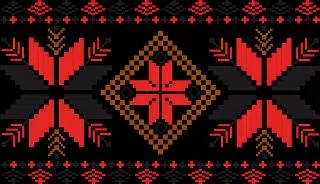
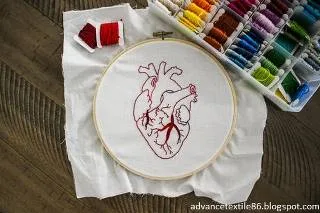

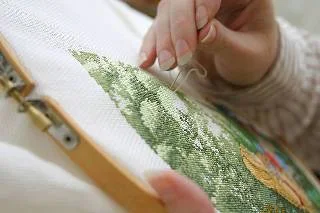
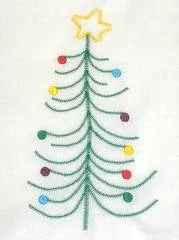
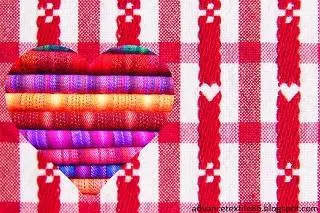
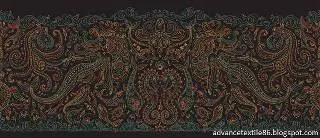
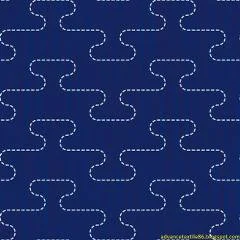







0 Comments